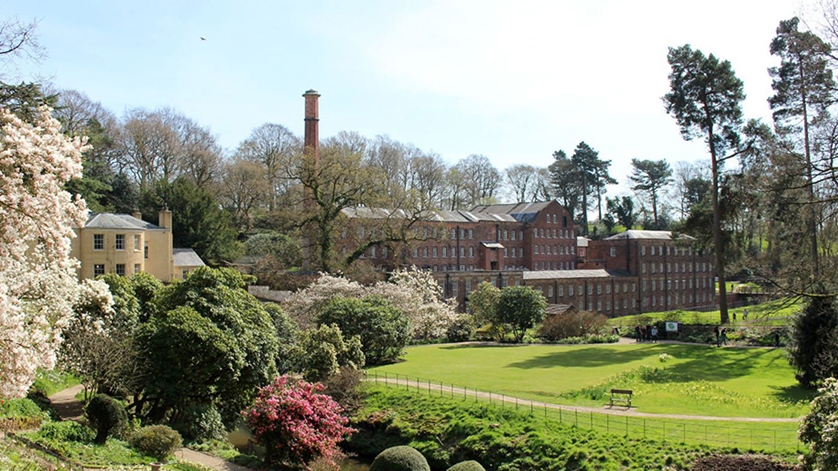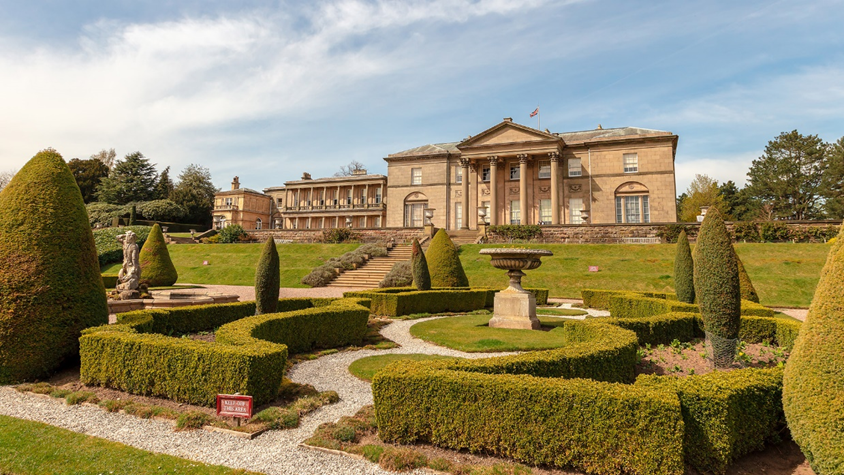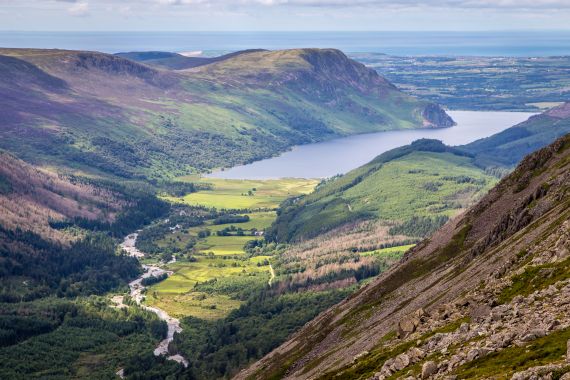Tourism

Experience the best of Cheshire in Wilmslow. From its picturesque countryside to its vibrant city life.
The Edge Forest, Alderley Edge and Hare Hill

The Edge - Dramatic red sandstone escarpment, with impressive views. Walk the dramatic red sandstone escarpment of Alderley Edge, with views over the Cheshire Plain to the Peak District. Originally the Edge was part of an extensive Oak Forest that once covered Cheshire and much of the British Isles. This has been augmented by natural regeneration of other tree species including oak, birch, rowan and holly, woodland now comprises around two thirds of the total area of the Edge. The wonderful variety of woodland birds found here include flycatcher, redstart, nuthatch, tree creeper, green and great spotted woodpeckers, woodcock, raven, and goldcrest. If you're very lucky you may hear or even see a tawny owl!
Hare Hill Hall - is a country house and a garden in the parish of Over Alderley, Cheshire. The house and grounds are privately owned, and the separate nearby garden is in the care of the National Trust.
The house was built in about 1800 for William Hibbert of Birtles Hall. It was extended and remodelled in the middle of the 19th century for the Brocklehurst family.
The National Trust wooded garden contains over 70 varieties of rhododendron, plus azaleas, hollies, and hostas. At its centre is a walled garden containing a pergola and wire sculptures. A permissive path leads from the garden to the ridge of Alderley Edge. The garden is open to the public at advertised times; there is an admission charge.

Manchester City Centre

Visitors travel from all over the world to visit Manchester and it’s easy to see why. Manchester is fit to burst with of a number of sporting attractions and events, and with a huge arts and culture scene, it's almost impossible to run out of things to see and do in Greater Manchester. After joining UNESCO's worldwide Creative Cities network as a City of Literature, Manchester's radical literature history has been catapulted into the limelight, with plenty of book-based attractions and events taking place year-round. With a thriving LGBT scene, including the world famous canal street, LGBT travellers won't be disappointed. If it's rolling hills and beautiful countryside you're seeking, Greater Manchester has it in abundance, with over 500 square miles of inspiring countryside, crisscrossed by historical waterways and dotted with picturesque towns and fascinating attractions that make for great days out of the city.
Manchester’s food and drink culture is thriving. With new restaurants, bars, gastropubs, micro-breweries and cafes opening weekly, the city is establishing itself as one of the UK’s most exciting foodie destinations.
From fine dining and afternoon tea to pop-up markets and humble street food, Greater Manchester is packed with options to suit any mood offering any and every cuisine you can think of. This city is a haven for vegan and vegetarian cuisine, and is fit to burst with a number of halal options too.
Shopping centres such as Manchester Arndale and The Trafford Centre as well as high street destinations such as Exchange Square and Market Street offer an unrivalled selection of international brands combined with the best of British at department stores like John Lewis, Selfridges, House of Fraser and Marks and Spencer.
For that extra special something, visit boutique districts around King Street, Spinningfields and New Cathedral Street and browse their designer shops. Or if one-off independents and handmade is more your thing, Manchester's alternative and creative heart, The Northern Quarter, is home to countless vintage stores, record shops, cafés, bars and restaurants.
Historic Quarry Bank Mill and Style Woods

The woods are a great place to walk your dog off lead with lots of paths, streams, and open spaces. Parking at Quarry Bank Mill is free to visitors and the new National Trust cafe in the gardens is lovely, the staff are welcoming, the cakes are delicious and best of all - it is dog friendly!. Maps of the estate are available at the entrance to help you navigate your way around. Take a visit to the Apprentice House, where you hear stories about the children (some as young as age 9) who worked 12-hour days, six days a week. The children were not paid, but received plenty of food, clothing, and some primitive medical care courtesy of Dr. Peter Holland. The gardens, full of colourful rhododendrons and azaleas. At the cotton mill, you learn about the industrial revolution and founder Samuel Greg. Hannah Greg was an even more remarkable person. She would teach the girls how to read and write and give them occasional scriptural lessons.
Dunham Massey Hall

An English country house in the parish of Dunham Massey in the district of Trafford, near Altrincham, Greater Manchester. During World War I it was temporarily used as the Stamford Military Hospital.
It was designated a Grade I listed building on 5 March 1959. It has been owned by the National Trust since the death of Roger Grey, 10th and last Earl of Stamford in 1976.
Dunham Massey was re-built in the early 18th century by George Booth, 2nd Earl of Warrington. He had inherited an older mansion from his father, which was in a terrible state of repair.
The 300 acre deer park dates back to medieval times. As of 2012 the gardens housed over 700 plant species, as well as 1,600 trees and shrubs; it hosts the largest winter garden in Britain.
The oldest surviving building on the Dunham Estate is the watermill, first used as a corn mill, then a saw mill. During the Second World War the eastern part of the estate was requisitioned for use first as a US Army camp and later repurposed as Dunham Massey POW Camp.[32]
Tatton Park

Tatton Park is a historic estate in Cheshire, England, north of the town of Knutsford. It contains a mansion, Tatton Hall, a medieval manor house, Tatton Old Hall, Tatton Park Gardens, a farm and a deer park of 2,000 acres (8.1 km2). The gardens lie to the south of the hall and consist of formal and more natural gardens. Immediately to the southeast of the hall is the Italian Garden, a formal garden on two terraces, containing a statue of Neptune as its centrepiece. This garden was designed by Joseph Paxton and laid out by Edward Milner in 1847. After modifications over the years, it was restored to its original design in 1986.
Jodrell Bank Observatory

Jodrell Bank hosts a number of radio telescopes as part of the Jodrell Bank Centre for Astrophysics at the University of Manchester. The observatory was established in 1945 by Bernard Lovell, a radio astronomer at the university, to investigate cosmic rays after his work on radar in the Second World War. It has since played an important role in the research of meteoroids, quasars, pulsars, masers and gravitational lenses, and was heavily involved with the tracking of space probes at the start of the Space Age. . In 2019, the observatory became a UNESCO World Heritage Site.
The main telescope at the observatory is the Lovell Telescope. Its diameter of 250 ft (76 m) makes it the third largest steerable radio telescope in the world. There are three other active telescopes at the observatory; the Mark II, and 42 ft (13 m) and 7 m diameter radio telescopes. Jodrell Bank Observatory is the base of the Multi-Element Radio Linked Interferometer Network (MERLIN), a National Facility run by the University of Manchester on behalf of the Science and Technology Facilities Council.
The Jodrell Bank Visitor Centre and an arboretum are in Lower Withington, and the Lovell Telescope and the observatory near Goostrey and Holmes Chapel. The observatory is reached from the A535. The Crewe to Manchester Line passes by the site, and Goostrey station is a short distance away
Manchester United Football Club

The Manchester United Museum & Stadium Tour offers a behind the scenes look at the world’s most iconic stadium, Old Trafford. Sit in the managers seat in the dugout, walk through the players’ tunnel towards the hallowed turf and find the seat of your favourite player in the dressing room. Get a feel for life in the Premier League and immerse yourself in an unrivalled story, the greatest football story ever told. If you have additional access needs, email museum.enquiries@manutd.co.uk ahead of your tour.
Manchester City Football Club

Take a tour and you’ll get a behind the scenes look at Manchester City's stadium. As you move through the stadium, you’ll see the different parts that come together to create the football experience. You’ll be able to interact in the press room, see an audio-visual show in the First Team changing room and see the city story in the 360-degree cinema. On your tour, your guide will accompany you and give you facts and information about the stadium and the team.
The Lake District

Also known as the Lakes or Lakeland, is a mountainous region and national park in North West England. It is primarily famous for its mountain, lake, and coastal scenery, and for its literary associations with William Wordsworth and other Lake Poets, Beatrix Potter, and John Ruskin.
The Lake District is completely within Cumbria, and its mountains (or 'fells') are sometimes called the Cumbrian Mountains. It was historically divided between Cumberland, Westmorland and Lancashire.
The Lake District National Park includes all of the central Lake District, though the town of Kendal, some coastal areas, and the Lakeland Peninsulas are outside the park boundary.


